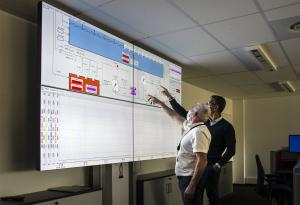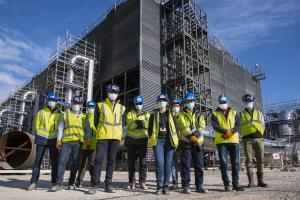A massive fill-up
When the ITER tokamak begins producing burning plasmas and auxiliary systems are operating at full capacity, the amount of heat to be removed from the installation will be in the range of 1100 MW. The extraction and dissipation of such a huge amount of energy requires an oversize heat rejection system that comprises kilometres of piping, dozens of extremely powerful pumps, countless valves and filtres, massive cooling towers, and two water basins (one "hot" and one "cold") equivalent in size to six or seven Olympic pools.
One of the basic requirements for any water basin is to be as leak-tight as possible. Although some loss of water through seepage is inevitable in concrete basins such as ITER's, an "assessment of tightness" was decided prior to turning over the heat rejection system to the ITER commissioning team.
Once the basins are filled and stabilized, the water level will be closely observed by a set of radars and the measurements compared to "witness tanks" to account for evaporation. If radars register a drop beyond the acceptable leak rate (on the order of a few cubic metres per day due to the porosity of the concrete, the occasional micro-fissures, and seepage through junctions), that would signal a problem.



